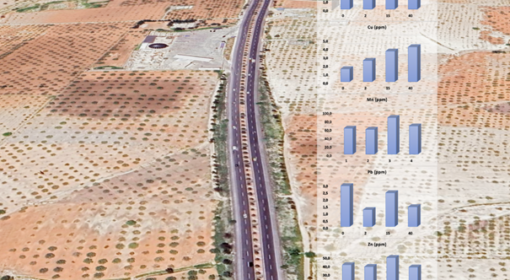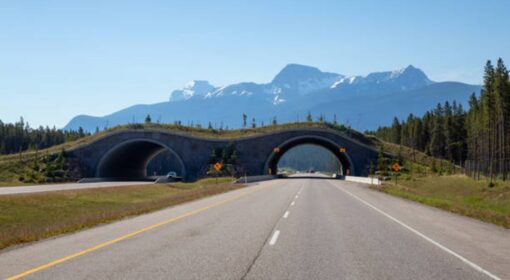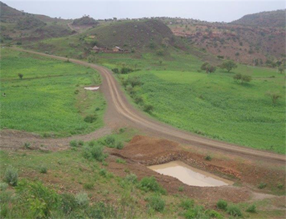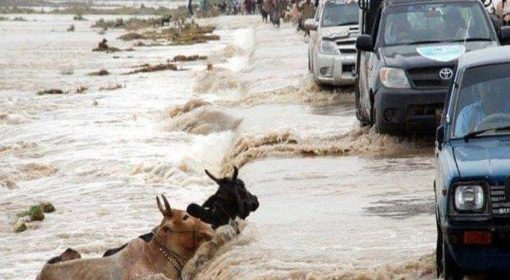By Ellie Yu (MetaMeta Research)
Soil is a crucial resource for humans, providing a vital environment for plants to grow and serving as a major source of nutrients for crops consumed worldwide. Additionally, soil plays an important role in filtering and cleaning water and contains a wealth of biodiversity. Unfortunately, conventional road design poses a significant risk of soil pollution from roads and highways, which can have harmful effects on soil health.
The soil near roads and highways is exposed to road dust, heavy metals, polycyclic aromatic hydrocarbons (PAHs) and salts from vehicles and traffic-related activities, which are elaborated upon below. These pollutants are either deposited on the surrounding soil by winds or washed off the impermeable road surfaces to soil during rainstorms and snowmelt.
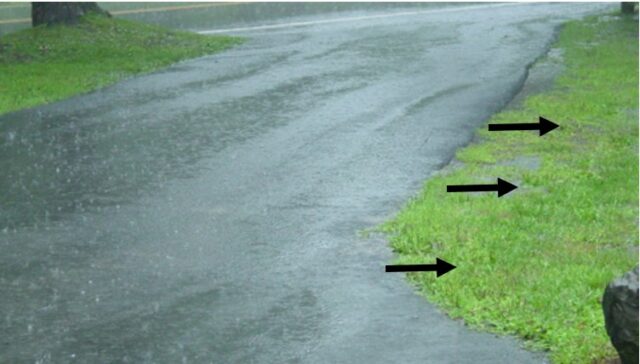
Road dust – contains a variety of substances, such as car exhaust, worn tires, brake lining, trash, road paint, and materials. Fine particles in road dust can absorb toxic substances like heavy metals and small organic matter, making the dust more toxic. Apart from being associated with toxic substances, road dust can also change the properties of nearby soil and plants. For example, a study in the US found that road dust contamination increased soil pH from 4 to 7 and affected the characteristics of roadside plants [1].
Heavy metals – partly come from vegetation, rock minerals, and sands, but mainly from the combustion of car engines, catalytic converters, tires, brakes, body parts, and roadside structures. Although heavy metals are sparsely distributed in polluted soil, they are highly toxic. For instance, a Canadian study revealed that long-term exposure to nickel and copper in the environment, up to 30 years, resulted in 19% deaths and 11% incident cancers [2].
PAHs and salts – PAHs, organic pollutants from combustion byproducts, car tire and brake lining wear, car care products, and road construction additives, can bind to fine road dust and enter the soil, posing a threat to human health. The World Health Organization classifies 13 PAHs as genotoxic and carcinogenic, with 7 of them commonly originating from road traffic [3]. Salts, containing sodium chloride, are seasonally used to clear snow and ensure road or highway safety. Excessive salts can potentially leach into groundwater and surface water bodies.
To tackle soil pollution from roads, scientists and policymakers are exploring various strategies. They aim to control pollution at its source or capture pollutants effectively. Some measures include reducing the use of road materials with high fine particle content and limiting salt usage to decrease road dust and salt pollution. Planting grass buffer strips along roadsides is a simple and effective way to capture pollutants from road runoff. These strips consist of vegetation that helps trap sediment, slow down the flow of runoff, and promote water infiltration into the soil. Figure 2 shows typical grass buffer strips on both sides of roads. Moreover, policymakers are increasingly recognizing society’s responsibility in addressing pollution. For instance, the UK government is considering implementing tyre taxes to reduce particle emissions from tyre wear on electric cars [4, 5].

As the attention is raising, people now have a better understanding of how soil pollution is affected by emissions from roads. The efforts of governments, societies, researchers, and individuals are paving the way towards a cleaner and healthier environment—a more sustainable future where soil and the ecosystems it supports can develop and continue to benefit present and future generations.
References
- Ackerman, D.E. and J.C. Finlay, Road dust biases NDVI and alters edaphic properties in Alaskan arctic tundra. Scientific reports, 2019. 9(1): p. 214.
- Lightfoot, N., C. Berriault, and R. Semenciw, Mortality and cancer incidence in a nickel cohort. Occupational Medicine, 2010. 60(3): p. 211-218.
- WHO, Human health effects of polycyclic aromatic hydrocarbons as ambient air pollutants: report of the Working Group on Polycyclic Aromatic Hydrocarbons of the Joint Task Force on the Health Aspects of Air Pollution. 2021.
- Gill, O. Drivers could be hit with new ‘tyre tax’ in crackdown on emissions. The Telegraph [cited 2023, July 4]; Available from: https://www.telegraph.co.uk/business/2023/02/26/drivers-could-hit-new-tyre-tax-new-crackdown-emissions/.
- Gill, O. Electric cars should face ‘tyre tax’, says air quality adviser. The Telegraph [cited 2023, July 5 ]; Available from: https://www.telegraph.co.uk/business/2022/05/30/electric-cars-should-face-tyre-tax-says-air-quality-adviser/.
